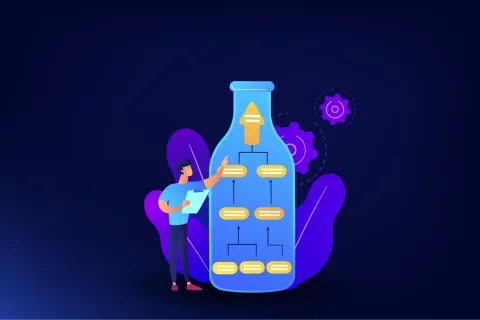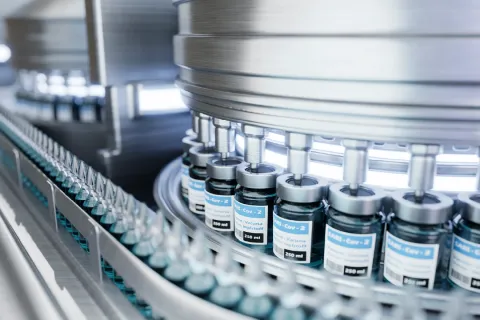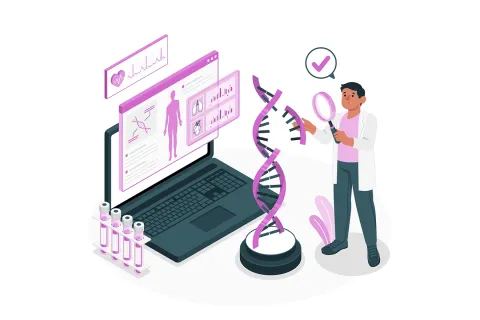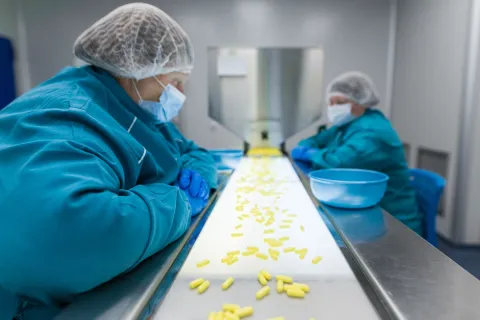
Artwork is a powerful branding tool in the pharmaceutical industry as it helps organizations create the correct brand perceptions. A survey conducted in late 2017 revealed that 60% of consumers are likely to reject a product if the label does not provide enough product information, while inadequate pictures and small text deter 37% of the end-users. Compliant artwork plays an important role when it comes to branding a product as well as meeting all the Regulatory and marketing requirements.
Why is Compliant Artwork Important in Branding?
1. Brand Differentiation:
Unique and vibrant artwork creates a point of difference amongst the brands across different pharmaceutical companies. For instance, according to the United States Food and Drug Administration (USFDA) guidelines of July 2022, the following points must be in bold:
Drug name, pronunciation spelling, dosage form, step number, and figure titles.
Moreover, compliant artwork makes a brand compliant and audit-ready by meeting all the Regulatory requirements and guidelines of the competent Health Authorities (HAs).
2. Helps in Brand Protection
Medicinal products such as contraceptives and fertility drugs are a common target for counterfeiting. In such cases, specific nuances of artwork play an essential role in authenticating the original product. While referring to a brand book, for example, every organization has its logo with specific color schemes, hex code, and typography (font which a company uses, e.g., Helvetica). There is a particular measurement for cluttering and spacing as well, which the stakeholders and artwork designers know. Furthermore, there are specific anti-counterfeiting features incorporated in the artwork, such as Holographic labels, ), watermarks, etc. Any counterfeit product will fail to accommodate such details in their artwork, which helps the end-users and the HA to identify any fake products while authenticating the original medicinal product and protecting the brand's image.
3. Creates a Perception for the Brand
Pharmaceutical companies spend millions of dollars to make the end-user perceive correctly. According to a study, in Over-the-Counter (OTC) medication, certain artwork features in the secondary packaging, such as red and pink colors, emerged as the most preferred ones. Blue and white are second in preference. The greater the product appeals visually, the greater will be the potential for creating an emotional attachment to the product. This can translate to positive brand perception.
Ways to Ensure the Artwork is Compliant
1. Identifying HA Guidelines
Every product in the industry is regulated by an established authority. In the pharmaceutical industry, authorities such as the FDA, the European Medicines Agency (EMA), etc., are the key regulators. To ensure the artwork is compliant, compliance experts within the organization must first identify the regulation that applies to the specific artwork. For example, according to the Code of Federal Regulations (CFR), title 21, “Ask a doctor or pharmacist before use if you are,” [in bold type] or for products labeled only for use in children under twelve (12) years of age, “Ask a doctor or pharmacist before use if the child is,” [in bold type], followed by all drug-drug and drug-food interaction warnings should be included in OTC labeling. The HA regulations keep changing. Hence, constant monitoring of these changes is essential for staying compliant.
2. Proofreading the Artwork
Any artwork defect, such as a small misprint, can cost an organization millions of dollars. Therefore, the pharmaceutical industry should undertake to proofread the artwork and check for any imperfections or errors to ensure being in line with all relevant regulations. Moreover, it allows checking whether the artwork can communicate the brand message and product usability to the end-user or not, helping the brand in creating the right perception.
3. Managing the Artwork Process
Pharmaceutical organizations have to undergo a laborious process in creating compliant artwork. There's a constant back and forth of the artwork between designers, product managers, brand managers, QC managers, etc., to ensure the artwork is not only compliant but vibrant as well. Hence workflow management is required, which helps the brand to manage the artwork process efficiently, reducing errors and confusion. Better control of the workflow process leads to compliant and error-free artwork,
4. Correct Artwork in Packaging
From Content-to-Carton, the organization is able to communicate product information and brand message to the end-user. Two (02) aspects of the artwork are printed on the drug carton, i.e., the design part of the artwork, such as the logo, colors, texts, etc., and the printing text as required by the Indian Drugs and Cosmetic Act, 1940, such as batch no, manufacturing date, MRP, Pack size, etc. Ensuring the correct artwork is printed on the right package for various dosage forms, such as liquid doses, tablets, etc., is crucial in staying compliant.
For instance, according to the Central Drugs Standard Control Organization (CDSCO) guidelines, for Schedule G drugs, the packs should mention the following warning in legible black-colored font, in a red rectangular box: “Schedule G Prescription Drug - Caution: It is dangerous to take this preparation except under medical supervision.” For Schedule H drugs that fall under the Narcotic Drugs and Psychotropic Substances Act, 1985 (India), the carton must have the symbol NRx in red on the left top corner of the pack. Misprints can lead to mortality. Hence, the correct information and symbols should be printed on the right carton.
Compliant artwork avoids packaging and regulation-requirement hurdles, allowing pharmaceutical organizations to build a brand in the market. Creating vibrant artwork and ensuring that it is compliant is equally important.
Organizations that have an efficient team of experts for providing compliant artwork will see strong brand differentiation and perception amongst the competitors. Freyr, with over three hundred (300) Regulatory-trained members and a strong artwork design studio, provides comprehensive artwork services, catering to your personalized requirements. Consult for end-to-end artwork solutions and compliance best practices.









